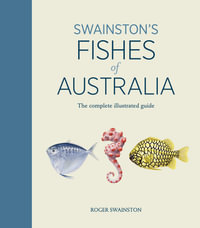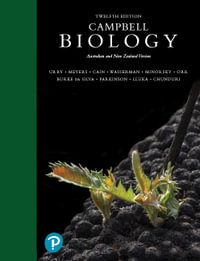| Preface | p. xi |
| History and Natural History | p. 1 |
| Taxonomy and Phylogeny | p. 3 |
| Social Organization | p. 4 |
| Ecology | p. 7 |
| Conservation Issues | p. 7 |
| Issues Addressed by the Research and Organization of the Book | p. 11 |
| The Selous, the Study Population, and General Methods | p. 15 |
| The Selous Game Reserve | p. 15 |
| The Study Area and Population | p. 23 |
| General Methods | p. 25 |
| Home Ranges and Habitat Selection | p. 36 |
| Specific Methods | p. 36 |
| Description of Home Ranges | p. 39 |
| Exclusive Areas, Overlaps and Territorial Defense | p. 41 |
| Den Locations and Characteristics | p. 50 |
| Pack Size and Range Size | p. 51 |
| Habitat Selection | p. 52 |
| Effect of Prey Distribution on Habitat Selection and Home Range Properties | p. 55 |
| Comparison with Other Wild Dog Populations | p. 59 |
| Summary | p. 65 |
| Cooperative Hunting and the Evolution of Sociality | p. 67 |
| Specific Methodsv69 | |
| Hunting and Foraging Success | p. 73 |
| Prey Selection and Hunting Success | p. 74 |
| Cooperative Hunting Behavior | p. 76 |
| Characteristics of Kill Sites | p. 84 |
| Quantitative Effects of Pack Size on Hunting Benefits and Costs | p. 84 |
| Optimal Hunting Pack Size | p. 88 |
| Net Rate of Food Intake vs. Efficiency | p. 89 |
| Effects of Group Size Unrelated to Hunting | p. 95 |
| Variance in Foraging Success | p. 96 |
| Other Wild Dog Populations | p. 97 |
| Communal Hunting and Group Size: Comparisons with Other Species | p. 98 |
| Prey Selection | p. 103 |
| Prey Availability and Encounter Rates | p. 105 |
| Encounters and Hunts | p. 109 |
| Hunts and Kills | p. 111 |
| Combined Effects of Encounter, Hunting, and Killing Probabilities on Prey Selection | p. 112 |
| Quantitative Models of Prey Selection | p. 114 |
| Summary | p. 122 |
| Ungulate Herd Sizes and the Risk of Predation by Wild Dogs | p. 124 |
| Probability of Being Encountered | p. 126 |
| The Probability of Being Hunted upon Encounter | p. 130 |
| Hunting Success | p. 130 |
| Kills per Encounter, Dilution of Risk, and Combined Measures of Vulnerability | p. 133 |
| Demography-Survival and Reproduction | p. 145 |
| Survival Rates | p. 145 |
| Reproduction | p. 159 |
| Density Dependence | p. 173 |
| Genetic Effective Population Size | p. 175 |
| Demographic Effective Population Size | p. 176 |
| Dispersal | p. 179 |
| Defining Dispersal in Social Carnivores | p. 181 |
| Number and Size of Dispersing Groups | p. 184 |
| Rates of Dispersal | p. 184 |
| Size of Dispersing Groups | p. 184 |
| Linear Dispersal Distance | p. 186 |
| The Duration and Circumstances of Floating | p. 187 |
| Comparison with Dispersal in Other Wild Dog Populations | p. 190 |
| Mortality Risk of Dispersal | p. 191 |
| Dispersal and Escape from Reproductive Suppression | p. 194 |
| Dispersal and Escape from Inbreeding | p. 195 |
| Integrating Forces that Drive Dispersal | p. 200 |
| Reproductive Suppression, Social Stress, and the Behavioral and Endocrine Correlates of Rank | p. 201 |
| Are Dominants More Aggressive? | p. 205 |
| Do Dominants Mate More Often or More Effectively? | p. 207 |
| Do Hormonal Differences Accompany Behavioral Differences? | p. 210 |
| Nonbreeder Lactation | p. 214 |
| Does Social Stress Mediate Reproductive Suppression of Subordinates? | p. 215 |
| How Effective Is Reproductive Suppression of Subordinates? | p. 216 |
| Similarities and Differences between the Sexes in the Correlates of Rank | p. 217 |
| Interspecific Comparisons | p. 218 |
| Dominance and Stress | p. 218 |
| Do the Correlates of Rank Relate to Dispersal and Social Organization? | p. 222 |
| Patterns of Relatedness and the Fitness Consequences of Dispersal, Philopatry, and Reproductive Suppression | p. 223 |
| Age-specific Relatedness of Natal and Immigrant Subordinates to Breeders | p. 226 |
| Inclusive Fitness of Nondispersers | p. 231 |
| Inclusive Fitness of Dispersers | p. 238 |
| Incomplete Reproductive Suppression: Breeding by Subordinates | p. 240 |
| Interspecific Competition with Larger Carnivores | p. 245 |
| Specific Methods | p. 246 |
| Carnivore Densities and Distributions in Selous | p. 248 |
| Correlations between Species Densities | p. 253 |
| Diet Overlap | p. 257 |
| Direct Competition at Kills | p. 259 |
| Interactions Away from Kills | p. 263 |
| Impact of Interspecific Competition | p. 265 |
| Adaptations to Interspecific Competition | p. 266 |
| Infectious Diseases | p. 269 |
| Canine Distemper Virus | p. 271 |
| Rabies Virus | p. 274 |
| Anthrax | p. 277 |
| Canine Parvovirus | p. 279 |
| Other Pathogens | p. 281 |
| Behavior and Epidemiology | p. 284 |
| Impact of Diseases on Population Dynamics and Density | p. 286 |
| Extinction Risk and Conservation | p. 288 |
| Analysis of Extinction Risk with Leslie Matrix Projections | p. 290 |
| Stochastic Individual-Based Modeling of Extinction Risk | p. 295 |
| Sensitivity Analysis and Results | p. 298 |
| Summary and Recommendations | p. 308 |
| References | p. 311 |
| Index | p. 339 |
| Table of Contents provided by Publisher. All Rights Reserved. |
























